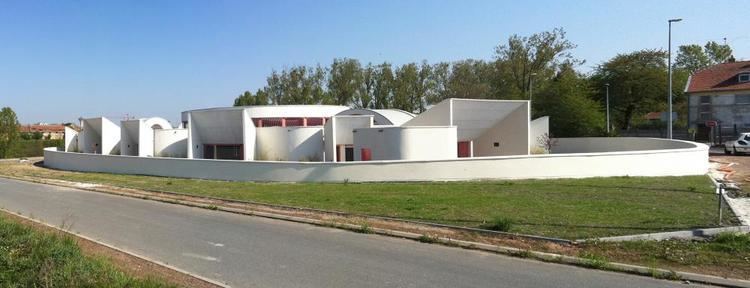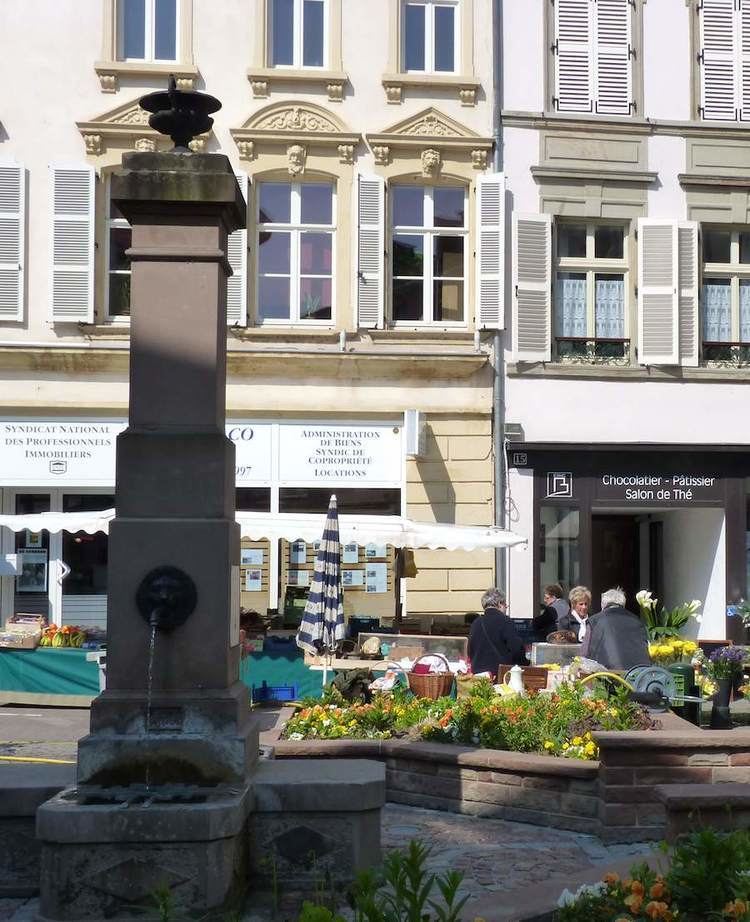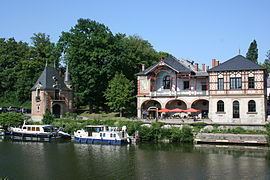Country Region Lorraine | Area 21,965 Mayor Celeste Lett | |
 | ||
Map of Sarreguemines
Sarreguemines ([saʁɡəmin]; German: Saargemünd , Lorraine Franconian: Saargemìnn) is a commune in the Moselle department of the Grand Est administrative region in north-eastern France.
Contents
- Map of Sarreguemines
- Dinner at ghandi restaurant
- Sarreguemines france 21 07 2011
- Geography
- Administration
- History
- Notable people
- References

It is the seat of an arrondissement and a canton. As of the 2013 France census, the town's population is 21,572. The inhabitants of the commune are known as Sarregueminois and Sarregueminoises.

Dinner at ghandi restaurant
Sarreguemines france 21 07 2011
Geography

Sarreguemines, whose name is a French spelling of the name in local Lorraine-German dialect "Saargemin", meaning "confluence into the Saar", is located at the confluence of the Blies and the Saar, 40 miles (64 km) east of Metz, 60 miles (97 km) northwest of Strasbourg by rail, and at the junction of the lines to Trier and Saarburg. Traditionally Sarreguemines was the head of river navigation on the Saar, its importance being a depot where boats were unloaded.
Administration
Sarreguemines was, from 1985 to 2015, the seat of two cantons:
Both cantons, minus the communes of Grundviller, Guebenhouse, Loupershouse and Woustviller that were added to the canton of Sarralbe, were merged into one canton of Sarreguemines on January 1, 2015.
History
Sarreguemines, originally a Roman settlement, obtained civic rights early in the 13th century. In 1297 it was ceded by the count of Saarbrücken to the Duke of Lorraine, and passed with Lorraine in 1766 to France.
It was transferred to Germany in 1871, with the Treaty of Frankfurt following the Franco-Prussian War. From 1871 to 1918 it formed part of the German imperial province of Alsace-Lorraine and manufactured plush velvet, leather, porcelain, and earthenware, and was a chief depot for papier-mâché boxes, mostly used for snuffboxes. It was returned to France after World War I.
On December 21–23 1944, the 44th Infantry Division (United States) threw back three attempts by the Germans to cross the Blies River. An aggressive defense of the Sarreguemines area was continued throughout February and most of March 1945.
Notable people
Sarreguemines was the birthplace of
